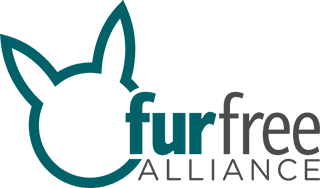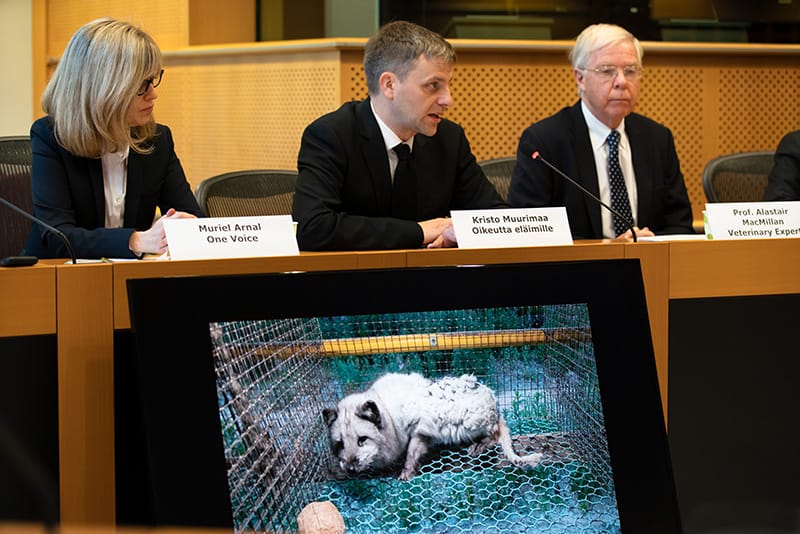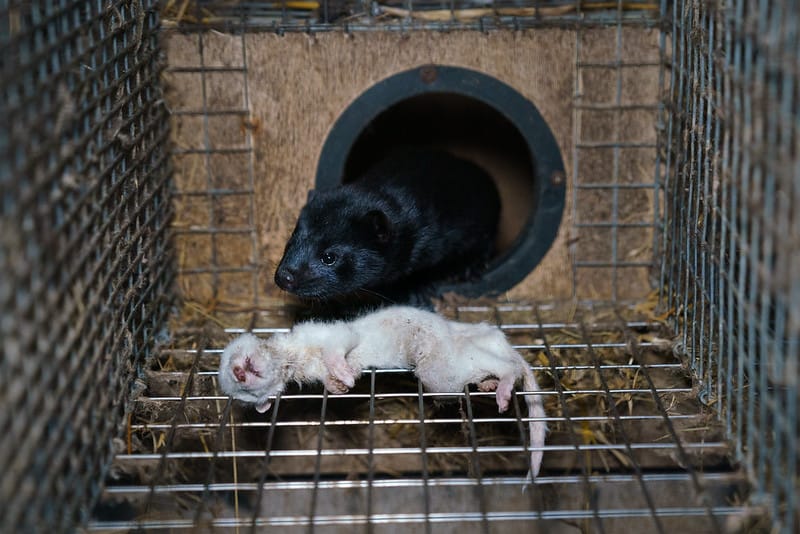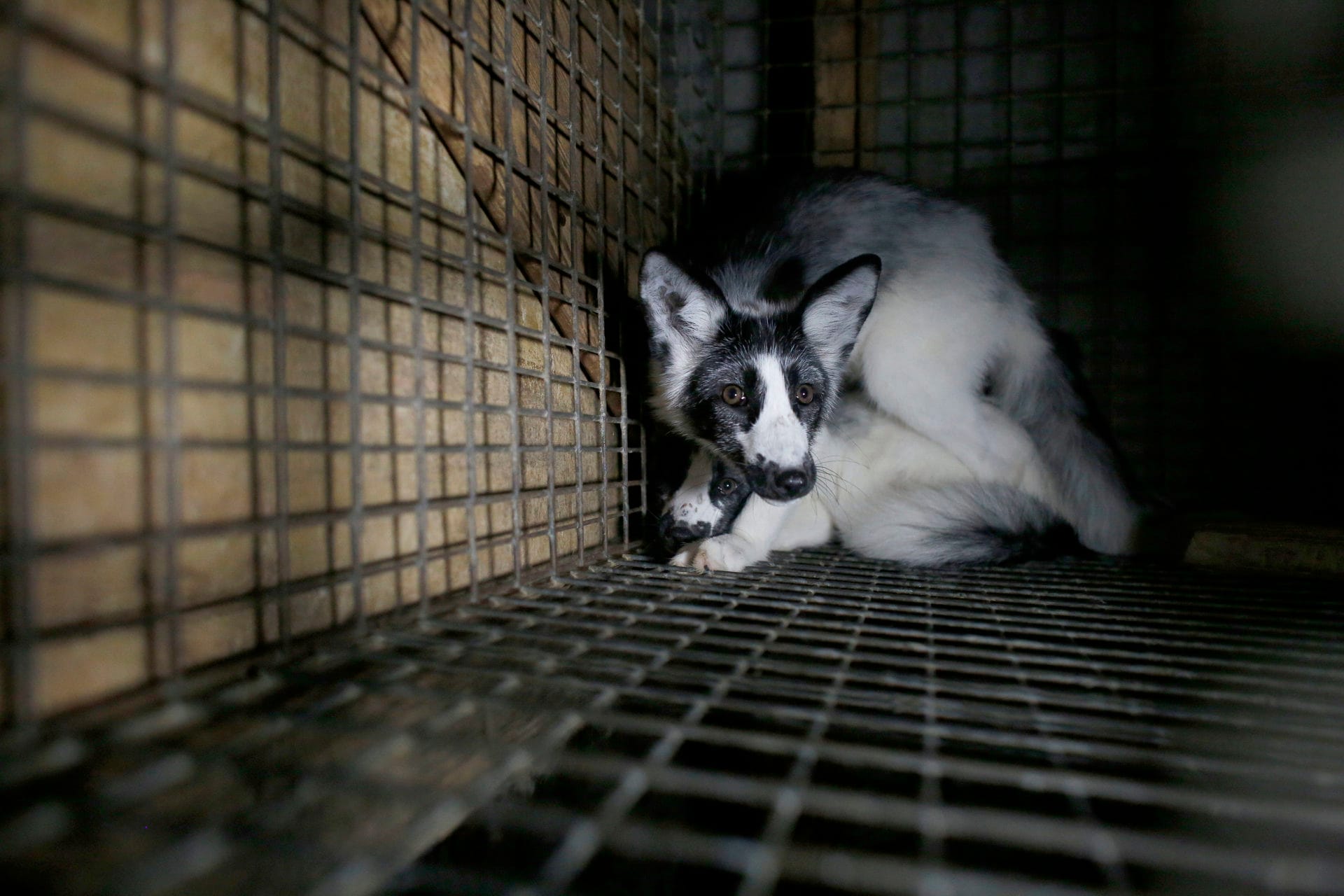
Dark side of fur farming exposed at the European Parliament
BRUSSELS, 22 NOVEMBER 2019 – This Wednesday, animal advocates exposed shocking conditions on European fur farms at the European Parliament and called for urgent action. Campaigners, veterinary experts and hosting MEPs argued that the confined caging system on fur farms does not meet the needs of predatory animals and violates basic animal welfare standards and European legislation.
The distressing footage taken on fur farms in France and Finland showed animals suffering numerous, severe health disorders, such as bent feet, obesity, bone deformities, stereotypical behaviour and eye infections. It also showed shocking scenes of animals who have died and been left on the cage floor decomposing, while others either walk over or cannibalise their bodies.
Ville Niinistö MEPMEP (Greens/EFA, Finland) said:
“Wild animals’ behavioural needs can’t be successfully met in captivity. There isn’t good public support for fur farming in Finland – 80% of the Finnish population supports an end to it.”
MEPs and campaigners concluded that breeding animals in battery cages is incompatible with EU Directive 98/58/EC concerning the protection of animals kept for farming purposes and contravenes Article 4 which states that Members States shall ensure that “the conditions under which animals (other than fish, reptiles or amphibians) are bred or kept, having regard to their species and to their degree of development, adaptation and domestication, and to their physiological and ethological needs in accordance with established experience and scientific knowledge, comply with the provisions set out in the Annex.”
Video evidence presented by FFA member organisations HSI, One Voice and Oikeutta eläimille ‘demonstrated to MEPs that the fur farms investigated do not meet the requirements of Article 4, most notably in relation to a) the inadequate size of the cages; b) the lack of non-wire substrate to allow for key behaviours such as digging, c) (in the case of naturally solitary and semi-aquatic mink) the lack of provision of water for swimming and lack of opportunity for animals to withdraw meaningfully from the presence of other animals, d) lack of provision of veterinary care or isolation for injured animals, and e) (in the case of many foxes on Finnish fur farms) failure to provide a diet in sufficient quantity to maintain them in good health,’ the European Interest reports.
Fur industry representatives attempted to defend the industry by arguing that the industry’s certification scheme WelFur rules out welfare problems such as shown on the video material. However, the WelFur protocols have been designed around the very serious limitations of the current housing systems, and do not address the serious health issues associated with the confined cage environment, as highlighted by the European Commission’s Scientific Committee on Animal Health and Animal Welfare: “Since current husbandry systems cause serious problems for all species of animals reared for fur, efforts should be made for all species to design housing systems which fulfil the needs of the animals.” The WelFur best current practice still represents what most people would consider to be an unacceptable level of welfare.
Veterinary expert Prof. dr. MacMilan said:
“Welfare certification schemes like Welfur do not measure or tell us anything meaningful about the welfare of these animals in scientific, absolute terms, they simply measure how farms compare with each other in the context of a fundamentally inadequate farming environment.”
Sylwia Spurek MEP (S&D, Poland), added:
“I want to talk about the issue of accountability, sometimes nobody feels responsible but this institution [the European Parliament] is responsible, legally, to do something.”







